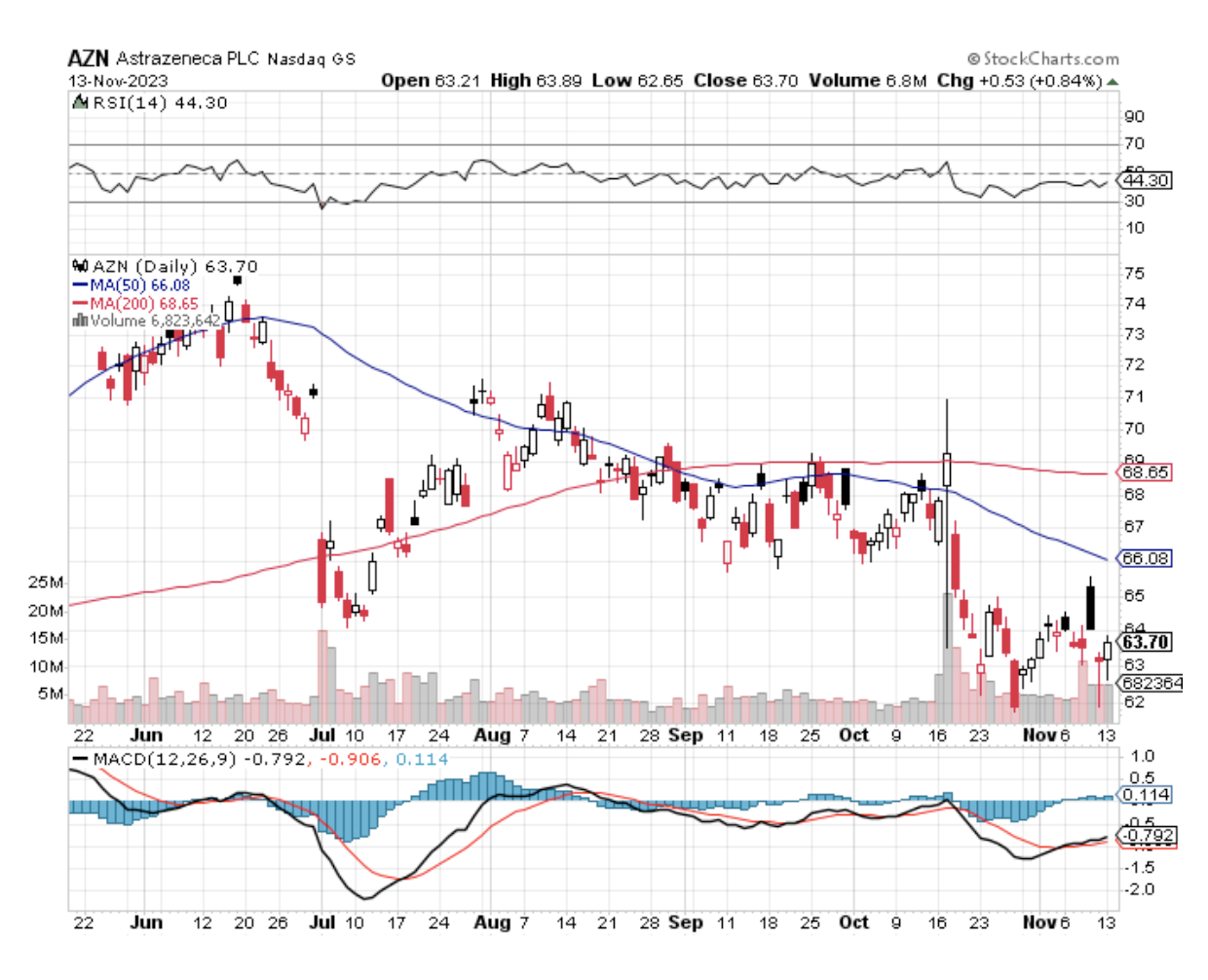In the high-stakes game of pharmaceutical innovation, AstraZeneca (AZN) isn't just playing to win; it's rewriting the rulebook.
A century-old company, born in the quiet labs of 1913 Sweden, AstraZeneca has become a linchpin in today’s cutting-edge medical advances. This isn't merely a story of corporate survival; it's a journey of transformation, emblematic of how old-world tenacity meets new-world innovation.
As we navigate the intricate world of biotechnology and healthcare, where even giants like Johnson & Johnson (JNJ) and Bristol Myers Squibb (BMY) wobble despite outperforming estimates, AstraZeneca emerges as a study in strategic agility.
Picture this: a company whose shares have seen a 5.7% dip this year, yet it stands as a beacon of opportunity for the discerning investor.
Trading at 15.6 times expected earnings over the next 12 months, it beckons with a valuation that whispers promise, floating below its five-year average.
Needless to say, these aren’t only financial figures but signposts pointing towards a rare investment opportunity in a volatile marketplace.
Let’s delve into the heart of AstraZeneca’s financial anatomy.
Twelve medicines in its arsenal are each marching towards the $1 billion revenue mark this 2023. Tagrisso, its flagship drug, contributes a mere 13.1% to its first-half revenue, showcasing a diversified portfolio that's resilient and well-balanced.
However, innovation isn't without its hurdles.
AstraZeneca faced a 16% decline in Soliris revenue due to patient transitions to newer treatments.
Here lies a lesson in the pursuit of progress – commitment to innovation and affordability can sometimes be a double-edged sword, affecting short-term gains but setting the stage for long-term sustainability. Still, AstraZeneca isn’t one to dwell on its losses for long.
Now, let's turn the page to AstraZeneca's audacious new chapter: entering the fiercely competitive arena of weight-loss medication.
Through a licensing agreement with China’s Eccogene, it's poised to develop an oral medication in the same class as Novo Nordisk’s (NVO) Wegovy drug.
But, the key factor that distinguishes AstraZeneca’s efforts is the pricing, which the company aims to be roughly half the current cost today.
To put things in perspective, Wegovy is priced at $1,349.02 per package. This figure unfolds into a weekly cost of $269.80. When extended over the span of a year, the drug becomes a more substantial financial commitment at $16,188.24.
Notably, the success of Wegovy has catalyzed Novo Nordisk's shares to soar by almost 50% this year.
Given the demand and AstraZeneca’s plan to adjust the price point, this is more than a simple business move for AstraZeneca; it's a venture that could redefine the accessibility of treatments for conditions like diabetes and obesity, impacting over 1 billion people globally.
In the crucible of the pandemic, AstraZeneca partnered with Oxford University to forge a path in the global health crisis, delivering over 3.5 billion doses of a COVID-19 vaccine worldwide.
Looking ahead, AstraZeneca’s leaders view obesity as another pandemic, signaling a strategic shift that melds business acumen with a commitment to global health.
Meanwhile, the latest earnings report from AstraZeneca is proof of its resilient business model.
Amid a 5.7% dip in its shares, the company's outlook is bullish, with an expectation of a low-teens percentage increase in total revenue excluding COVID-19 drugs.
This projection, backed by a 6% year-over-year revenue growth to $22.3 billion and an adjusted core EPS increase of 13% to $4.07, isn't only impressive; it's a narrative of sustained growth amidst adversity.
In conclusion, AstraZeneca's journey isn’t confined to financial returns; it's about being part of a narrative that’s shaping the future of healthcare innovation. I recommend you buy the dip.


